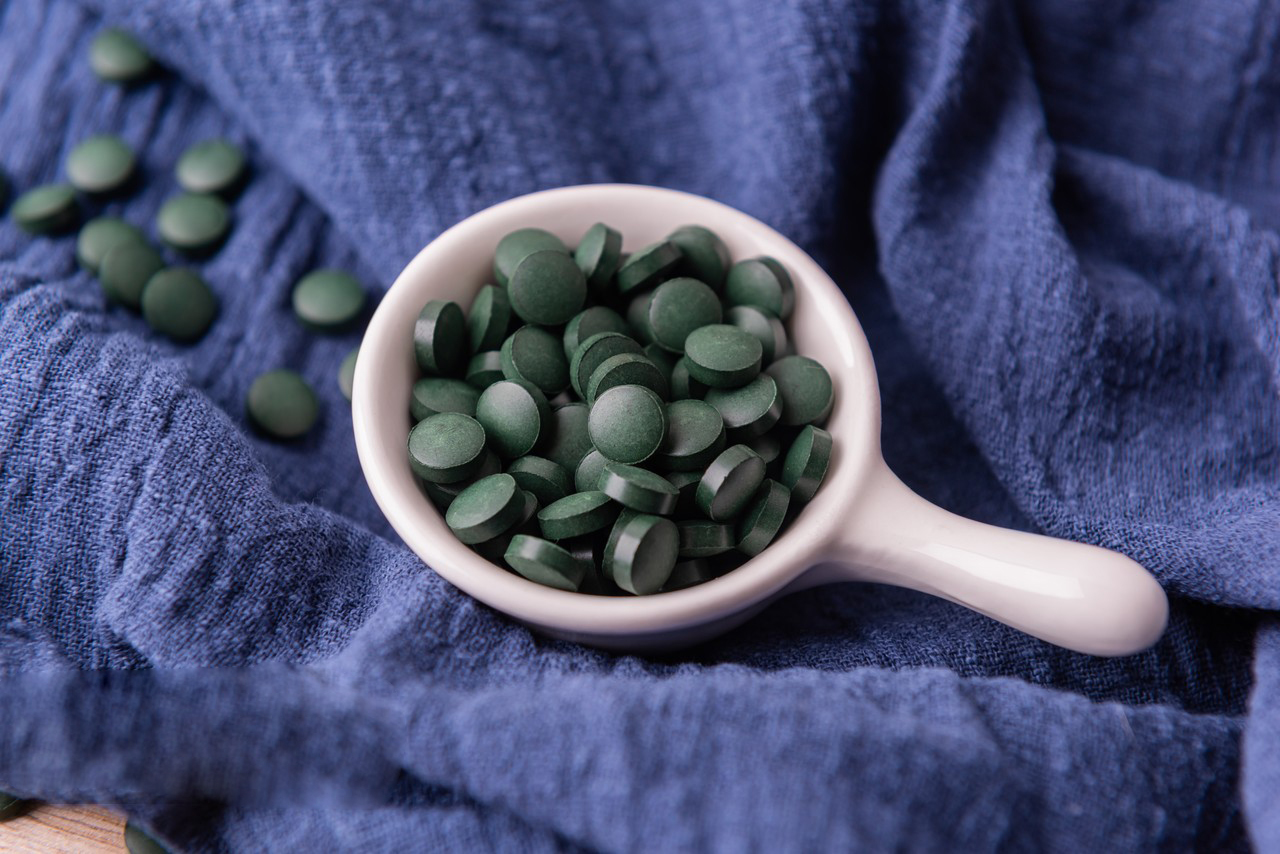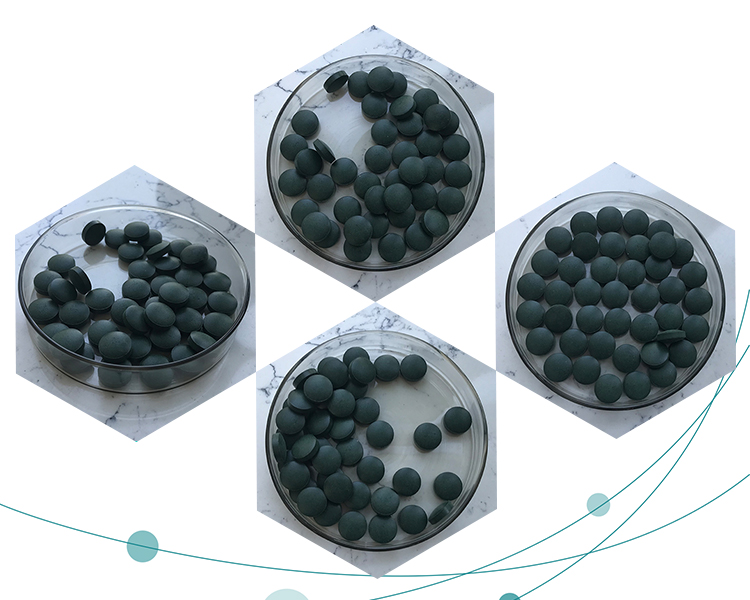Spirulina tablets are a popular form of dietary supplement derived from Spirulina, a type of cyanobacteria or blue-green algae. Spirulina is known for its high nutritional content and potential health benefits. Here’s an overview of its chemical structure and physical properties:
Chemical Structure of Spirulina Tablets:
Protein: Spirulina is rich in protein, containing all essential amino acids. It typically comprises around 50-70% protein by dry weight.
Carbohydrates: Spirulina contains carbohydrates, including complex polysaccharides and some simple sugars.
Lipids: Spirulina contains essential fatty acids, such as omega-3 and omega-6 fatty acids, albeit in smaller quantities compared to proteins and carbohydrates.
Vitamins and Minerals: Spirulina is a good source of various vitamins (e.g., B vitamins) and minerals (e.g., iron, calcium, magnesium).
Pigments: Spirulina’s blue-green color comes from pigments like chlorophyll, phycocyanin, and carotenoids (such as beta-carotene).

Physical Properties of Spirulina Tablets:
Color: Spirulina tablets are typically dark green or blue-green in color due to the presence of chlorophyll and phycocyanin.
Texture: The tablets are often compressed powder, resulting in a smooth texture.
Odor and Taste: Spirulina tablets may have a distinct seaweed-like odor and a slightly earthy or briny taste, which some people find unpleasant.
Size and Shape: Spirulina tablets come in various sizes and shapes depending on the manufacturer. Common shapes include round or oval tablets.
Solubility: Spirulina tablets are generally not soluble in water but can be chewed or swallowed whole with liquid.
Density: The density of Spirulina tablets depends on factors such as the compression process during manufacturing but is generally low due to the lightweight nature of Spirulina biomass.
Manufacturing Process:
Spirulina tablets are typically made by drying Spirulina biomass into a powder and then compressing it into tablet form using a binding agent.
The tablets may undergo additional processing steps such as granulation or coating to improve stability, taste, or appearance.
Quality control measures ensure the tablets meet standards for purity, potency, and absence of contaminants.

Storage and Shelf Life:
Spirulina tablets should be stored in a cool, dry place away from direct sunlight to maintain their nutritional integrity.
The shelf life of Spirulina tablets can vary depending on factors such as storage conditions and the presence of antioxidants or stabilizers added during manufacturing. Typically, they have a shelf life of 1-2 years when stored properly.
Overall, Spirulina tablets are a convenient and concentrated form of Spirulina biomass, offering a range of nutrients and potential health benefits in a compact and easy-to-use format.
